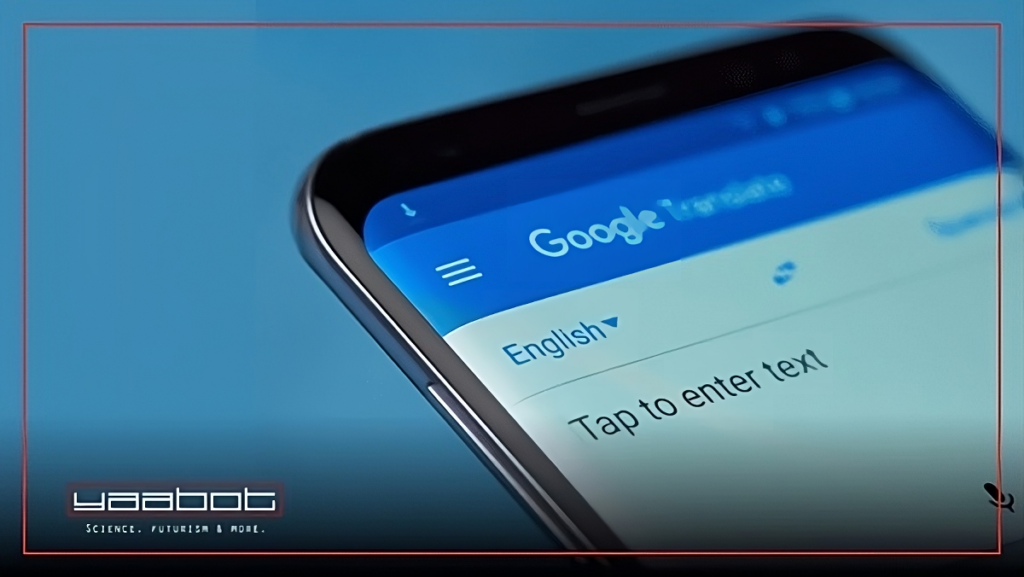Tired of Google Translate’s clunky translations? Fed up with translations that sound like they came from a robot? Looking for Google Translate alternatives that goes beyond Google’s basic word-for-word conversions? Is there anything better than Google Translate, you wonder?
You’re not alone.
While Google Translate is a handy tool for travellers and students (and its Tap to Translate feature quite possibly makes it the best translation app on Android), it has clear limitations. Complex sentences often get butchered. Security and privacy are questionable for business use. And don’t expect nuanced translations of idioms or literary prose. I’ve been disappointed too many times.
Fortunately, tools with better translation than Google are rising, with smarter AI integrated to challenge its dominance. And I have spent a good chunk of time in researching for the best Google Translate alternatives – I’ve even done a detailed Google Translate vs ChatGPT comparison. Now, I bring to you the six best Google Translate alternatives that leave clumsy old Google in the dust. Hopefully one of these will be the most accurate translation app for your needs.
The 6 Best Alternatives to Google Translate
In my opinion, the top 6 Google Translate alternatives in 2024 are:
- DeepL for nuanced translations,
- Microsoft Translator for its wide language support,
- Yandex Translate for Cyrillic languages,
- iTranslate for user-friendly interface,
- Papago for Asian languages, and
- Linguee (DeepL Dictionary) for context-based translations.
Each translation app offers unique features: DeepL excels in accuracy and context, Microsoft Translator vs Google Translate is an interest face-off since the ofrmer integrates well with other Microsoft services, Yandex provides excellent support for Russian and related languages, iTranslate offers a convenient voice-to-text feature, Papago specializes in East Asian languages, and Linguee combines a dictionary with a translation service for greater context understanding.
Here are a closer look at these 6 Google Translate alternatives in terms of accuracy, security, and functionality:
DeepL
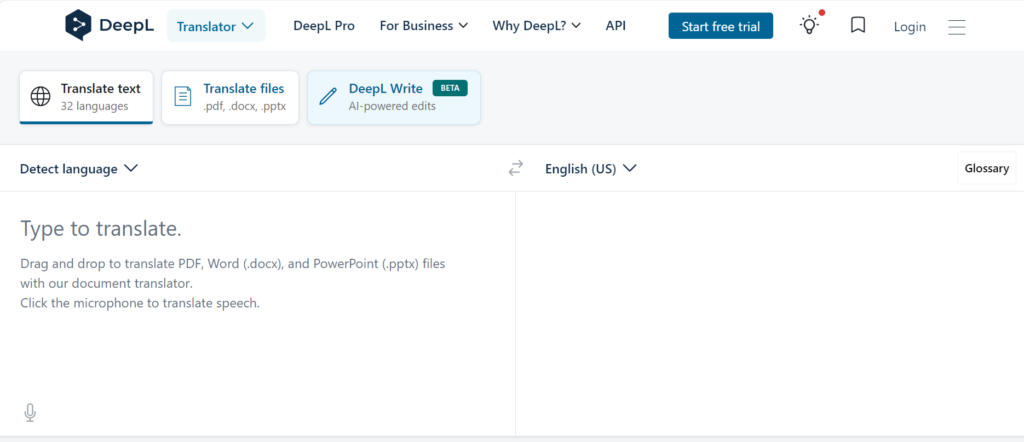
Tired of confusing translations that miss the mark? DeepL is your savior! I’ve found that this Google Translate alternative goes the extra mile for accuracy, capturing even tricky context and local idioms. Translate websites, texts, and documents with ease using DeepL’s web and app tools. Trust DeepL for natural-sounding translations that truly get the meaning right.
Its major downsides are fewer supported languages (40+) and a slightly higher cost. But despite that, DeepL is the best Google Translate alternative for getting extremely high-quality translations. Here’s a comparison of DeepL with its competitors for accuracy.

This provides a few major advantages:
- Contextual understanding – The network better understands sentences and paragraphs for improved context.
- Trained on human linguists – DeepL NMT receives ongoing feedback from professional translators to enhance nuance.
- Idiom handling – Specialized training helps DeepL interpret idioms and colloquialisms more accurately.
Summary
- While Google Translate boasts a massive buffet of over 100 languages, DeepL offers a curated selection of close to 40 languages. Don’t let the smaller menu fool you, though – DeepL delivers over 800 delectable translation combinations within its repertoire!
- DeepL focuses on mastering the most widely spoken European tongues, alongside powerhouses like Chinese, Japanese, and Korean.
- However, DeepL comes with a slight price tag premium compared to Google Translate for its API. This means, if your translation needs go beyond DeepL’s free tier (500,000 characters per month), you might be shelling out a bit more.
- In conclusion, DeepL’s superior accuracy makes it a strong contender against Google Translate. But weigh your language needs carefully – DeepL’s menu is more refined, not as expansive. And if cost is a major factor, remember that DeepL asks for a bit more when the free bites run out.
Microsoft Translator
Hailing from the tech giant Microsoft, Translator brings its language chops to the translation party. Need to break language barriers on your website? Translator’s API is your gateway, letting you bridge the gap with other tongues. But Translator caters to everyday travelers and chatty folks too, offering tools like group meetings where everyone can converse in their comfort zone.
With a whopping 113 languages under its belt (that’s almost as many as Google, and way more than DeepL!), Translator reigns supreme in language variety. But its true secret weapon is its pocket-friendly pricing. If you’re looking to translate your digital haven, Translator’s free tier lets you translate 4 times as much as Google. And if you need more, its paid plans are half the price!
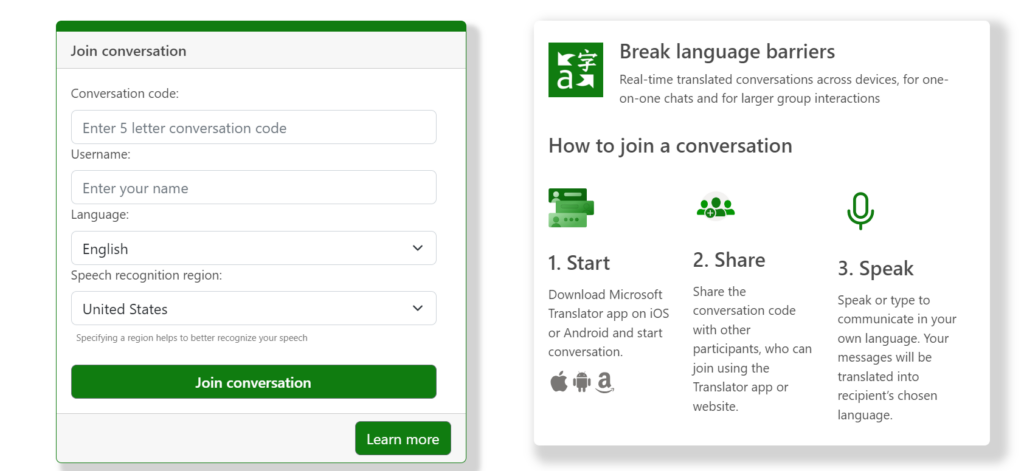
Here’s a quick breakdown of these cost-cutting superpowers:
- Translator lets you munch on 2 million translated characters per month, while Google only serves up 500,000.
- Need more translation treats? Translator charges just $10 per million characters, compared to Google’s $20.
- Translator even throws in extra discounts for those ordering larger language buffets.
However, before you declare Translator your new bestie, there are two tiny caveats:
- Language Library: Google offers a few more languages, though this might not matter if your needs are specific.
- Accuracy Edge: Some, like the DeepL study, consider Google’s translations slightly sharper.
In a nutshell, if saving money is your priority, Translator is your budget-savvy buddy. But if you require the most languages or crave the highest accuracy, Google might be your better bet.
Yandex Translate
Hailing from the land of borscht and babushkas, Yandex Translate is the translation service brought to you by the Russian search giant, Yandex. While its language buffet isn’t as extensive as Google’s (89+ languages versus 100+), it still serves up a delicious array of tongues. Just like Google, Yandex offers both website translation tools and a handy API for developers.
But where Yandex truly shines is its wallet-friendly pricing. Forget Google’s hefty $20 per million translated characters! Yandex offers a flat rate of just $3.94 per million, making it a steal compared to its competitors. That’s like paying a fraction for a full-course language feast!
Now, Yandex’s pricing might not be quite as sweet as Microsoft’s (whose prices decrease with larger orders), but it’s still a significant bargain. Plus, unlike Microsoft, Yandex doesn’t offer a free tier for API usage (though you can still use the web interface for free).
So, if you’re on a budget and need to translate beyond the free tiers of other services, Yandex Translate is definitely worth a try. It’s the perfect choice for budget-conscious globetrotters and language enthusiasts who want quality translations without breaking the bank.
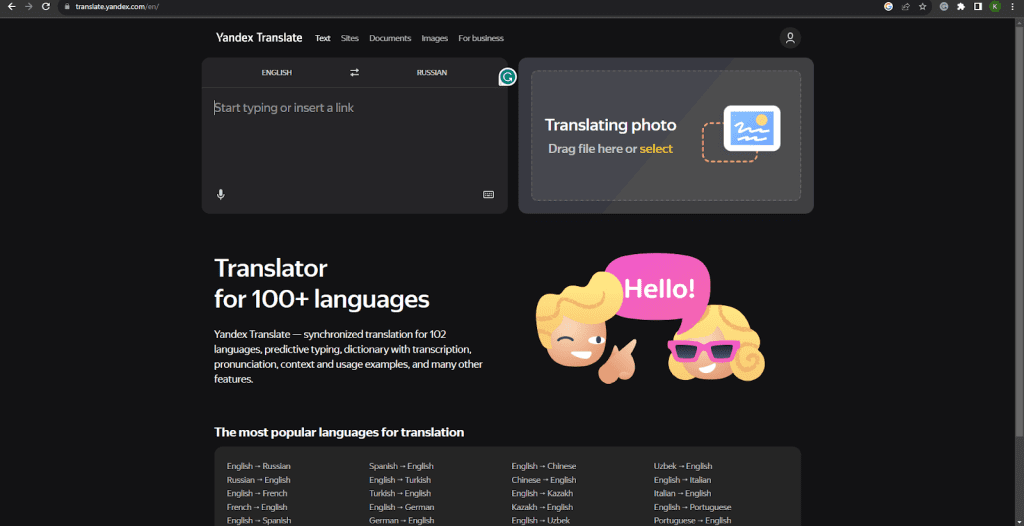
Yandex Translate does have a simpler interface compared to rivals. But the core translation capabilities are right, especially for common language pairs.
The affordable pricing makes it a great Google Translate alternative for a high-volume website or document translation. Non-profits may also qualify for free or discounted access to Yandex’s APIs.
iTranslate
iTranslate vs Google Translate is an oft-heard comparison. The tool, iTranslate, makes translation simple through iOS, Android, and web apps. It can translate text, websites, and speech. The gesture controls in iTranslate are much more handy for travellers vs Google Translate
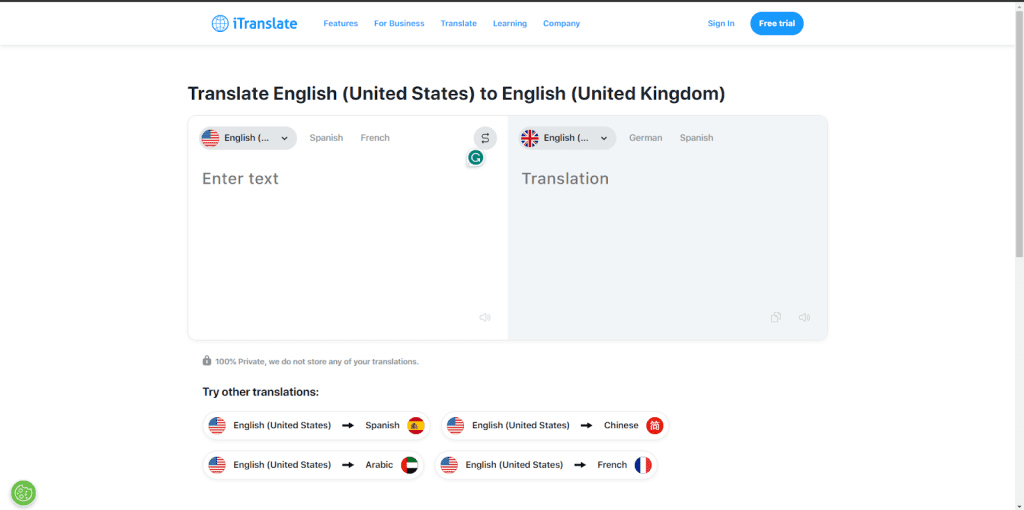
For quick personal translations on the go, iTranslate is easy to use. It may lack the depth of business tools but just like Google Translate it offers convenience of all major 100+ languages.
Papago – The Best Google Translate Alternative for Asian Languages
Papago is a translation app created by South Korean company Naver Corporation. It focuses primarily on translating between Korean, Japanese, Chinese and other Asian languages.
Papago really shines when dealing with Asian languages that can be challenging for conventional machine translation tools like Google Translate. It tends to provide translations that sound much more natural and human.
For example, translating a Korean news article into English, Papago will be more adept at correctly conveying context and nuanced phrasing compared to Google Translate or Microsoft Translator.
Useful features include optical character recognition (OCR) to detect and translate text in images, and a conversation mode that enables back-and-forth translation. Papago serves as a good alternative to Google Translate.
Linguee (DeepL Dictionary)
Linguee gives examples of translated words and phrases in context, helping you understand nuanced meanings. It’s great for translating idioms or single words accurately.
For tricky translations, Linguee goes beyond direct word conversions. Contextual learning makes it easier to grasp intended meanings.

Key Considerations for Choosing the Best Google Translate Alternative
With so many options for alternatives to Google Translate, how do you choose the right translation tool? Here are some key factors to consider:
- Will you be using it for personal or business purposes? Business tools offer more security, customization, and collaboration features.
- How many languages do you need to translate between? Some alternatives support far more languages than others.
- Do you need to translate large volumes of text? Pricing and API costs can vary greatly between tools for large projects.
- How accurate do your translations need to be? Some translation apps are better at conveying nuance and meaning than others.
- Will you need to customize engines or rules for specific use cases? Some services make customization easier.
- How is the app used? (e.g., web app, mobile app, browser extension, API integration for translation, etc.)
Think about your specific needs and goals. Then, match those up with the strengths of each tool to choose the best Google Translate alternatives for yourself.
The Pros and Cons of Google Translate
The pros:
- Supports over 100 languages
- Generally accurate translations
- Free web and mobile apps
- Useful features like photo and voice translation
- Easy integration with sites like WordPress
The cons:
- Accuracy issues with complex phrases and idioms
- Limited customization options
- Not suitable for companies due to lack of security
- You give Google rights to store and share your translations
For casual personal use, Google Translate ticks most boxes. But you may want more customization, security, and context-aware translations for business or professional use cases.
This is where Google Translate alternatives can help. Next, we’ll compare some excellent options.
It’s free, easy to use, and has handy options like photo translations. However, the lack of data security makes it less than ideal for business needs.
Comparing Google Translate Alternatives on Features and Use Cases
To help you choose the right translation app for Android or iOS, I’ll dive deeper into comparing their features and ideal use cases.
DeepL vs Google Translate
DeepL excels at:
- Highly accurate and nuanced translations of long-form content
- Translating books, articles, blogs, or other published content
- Any scenario where correct context and details are critical
DeepL isn’t made for quick conversational translations. But for projects where accuracy matters most, it leads the pack.
Microsoft Translator vs Google Translate
Microsoft Translator provides advantages for:
- Developers, by offering developer-friendly APIs and integration options
- Larger enterprises, thanks to affordable high-volume pricing
- Companies localizing products or content into multiple languages
It may not offer the best-nuanced translations for publishing. But for scale and cost-effectiveness, Microsoft Translator has business appeal.
Yandex Translate vs Google Translate
Yandex Translate excels at:
- Delivering high-quality translations at budget-friendly pricing
- Translating to and from Russian with strong language models
- Supporting Central Asian and Middle Eastern languages beyond just European tongues
For high-volume translation that needs to be focused on cost savings, Yandex Translate provides excellent value and language breadth.
iTranslate vs Google Translate
iTranslate offers advantages for:
- Travelers who want a simple mobile translation app
- Quickly looking up words, phrases, or menus while abroad
- Getting the hang of gesture-based translation controls
Business users may want more features. But for on-the-go personal translation, iTranslate delivers convenience.
Papago vs Google Translate
Papago is owned by Korean internet giant Naver, which also runs LINE (a popular messaging app). This gives Papago a few unique advantages:
- Chatbot integration – Papago powers translation for Naver’s chatbot services.
- Korean slang mastery – Unparalleled accuracy for modern Korean internet slang and acronyms.
- Voice recognition – Excellent Korean and Japanese speech-to-text capabilities.
- Papago also offers a browser plug-in for easy website translation. And the conversation mode with dual language display aids learning new languages through real dialogues.
Linguee vs Google Translate
Linguee shines when you need to:
- Look up single words and verify the right translation
- Learn how phrases are used in different real-world contexts
- Translate idioms or linguistically complex content
For nuanced and accurate translation of difficult content, Linguee provides helpful contextual learning.
As you can see, the strengths and best use cases differ widely across tools. Consider these comparisons as you evaluate options for your specific translation needs.
The Bottom line
Google Translate is a handy translation tool that works well in many situations. But it’s always good to have some compelling alternatives in your back pocket (or app drawer!) for times when Google Translate falls short.
The six alternatives to Google Translate explored in this article offer distinct advantages over Google Translate in different use cases. When determining which translation tool to use, it’s important to consider their individual strengths and weaknesses in order to make an informed decision.
Whether you need translation for a personal trip or an enterprise Google Translate alternative, you now know some of the best translation apps to consider. Finding the best tool is now a matter of matching features to your specific needs and use case.
Want to dig deeper? See my in-depth comparison of Google Translate vs ChatGPT for translations. If you’re new to Google Translate, check out our guide to using all the features of Google Translate on any app like a pro.
FAQs
Q: Is Yandex or Google Translate better?
A: For most languages, Google Translate is more effective. However, Yandex is better for translations into Eastern European languages.
Q: What is the alternative to Google Image Translator?
A: Microsoft Translator, is a top alternative for photo translation. It allows you to take a picture and translate it, with good language support.
Q: Is there a better translation app than Google Translator?
A: DeepL is considered one of the best Google Translate alternatives for accuracy, especially for grasping nuance and local context.
Q: Is DeepL better than Google Translate?
A: DeepL typically provides more accurate and natural translations than Google Translate. However, Google is cheaper if cost is a top priority.
Q: Is DeepL better than Yandex?
A: In comparative tests, DeepL generally provides better overall translation quality and accuracy. But Yandex has strengths like transliteration and cultural equivalents.


